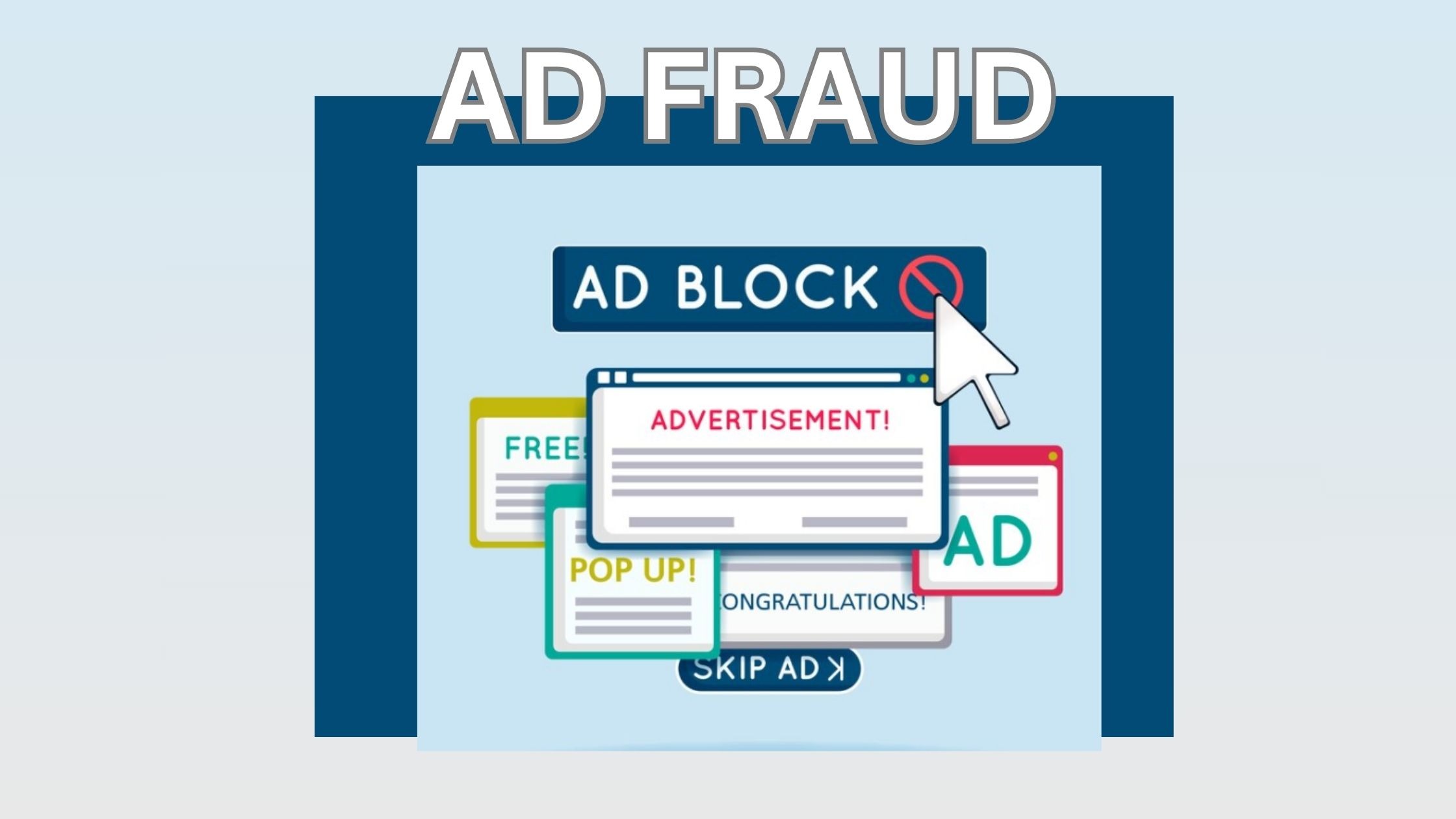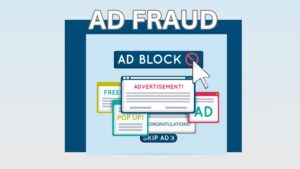In the current digital era, pay-per-click (PPC) advertising has become essential. Because of its cost-effectiveness and hyper-targeting powers, organizations may engage with high-intent prospects and increase revenue growth with great opportunities. Unfortunately, dishonest individuals may use fraudulent tactics to do Google Ads Fraud, resulting in a decrease in real leads and a waste of ad spend. A higher return on investment (ROI) can be achieved by being able to identify and stop fraudulent clicks.
Click frauds: What Are They?
Google Ads fraud is a fraudulent tactic that takes advantage of the PPC framework. By using phony links to mimic real impressions and engagement, dishonest people or automated bots pose as actual users. Businesses end up paying for pointless, unseen interactions as a result. According to study, companies could lose up to $170 billion in advertising expenditures as a result of ad fraud by 2028.
Click fraudsters frequently utilize bots, click farms, or ad stacking to automate this process. Software known as “bots” is capable of carrying out a variety of autonomous online tasks, such as filling out boring forms and continuously clicking on advertisements. Remarkably, thirty percent of automated web traffic is generated by malicious bots, who are skilled in high-speed abuse, misuse, and attacks (Imperva).
Inaccurate performance indicators and exhausted budgets are two outcomes of digital ad fraud. The credibility of data can be compromised by fake interactions, which makes it more difficult for advertisers to fulfill their conversion goals and make wise decisions.
The Four Kinds of Digital Ad Fraud
1. Click Spamming
Click spamming makes it more difficult to identify by attributing fraudulent clicks to real users. Invisibly, when a user visits an app or website that fraudsters have created, cunning bots begin clicking on advertisements automatically, frequently without the user’s knowledge. Some businesses will turn to unscrupulous tactics, such as click spamming, in today’s crowded online market in an attempt to undermine the competition. False clicks have the potential to taint a company’s brand reputation, squander resources, and skew performance data.
Click spam comes in various forms:
Background Clicks
This occurs when clicks are generated in the background of an app or mobile website without the user’s awareness or involvement. It can be achieved through invisible buttons or hidden frames while the user is actively engaging with the content or even when the fraudulent program is running quietly in the background.
Impressions-As-Clicks
This form of click spam employs a malicious script to set impressions that automatically initiate ad clicks, even when users haven’t interacted with the ad.
Device Clicks
In this form of Google ads fraud, scammers send clicks to tracking vendors using counterfeit Device IDs. These clicks are falsely credited to user engagement, despite no genuine ad interaction. Click farms are another kind of click spamming in addition to automated bots and scripts. Imagine a large room full of people seated in front of phones or computers. These laborers are paid very little to manually click on PPC advertisements in an effort to drive up clickthrough rates and exhaust advertising funds. Click farms are another kind of click spamming in addition to automated bots and scripts. Imagine a large room full of people seated in front of phones or computers. These laborers are paid very little to manually click on PPC advertisements in an effort to drive up clickthrough rates and exhaust advertising funds.
2. Geomasking
The amount you spend on ads depends on where in the world you want to target. One click fraud technique that hides the location of the produced clicks is called geomasking. Fraudsters use virtual private networks (VPNs) and fictitious IP addresses to trick marketers into overvaluing these fraudulent clicks. Payouts for clicks that result in fake engagement follow from this.
3. Phishing via PPC
A 2017 research revealed a phishing scheme that used fictitious URLs belonging to well-known financial institutions. A PPC campaign that resembled official bank or credit card brand advertisements was used in the plan. Users are likely to click on the PPC ad because they trust the brand, not realizing they will be taken to a phishing site that is trying to steal their personal data.
4. Ad Stacking
Ad stacking involves layering ads on top of each other in a single ad space, with only the topmost ad being visible to users. Each click on the top ad registers as a click or impression for every ad beneath it. This leaves advertisers paying for extra engagement they never received.
Effects of Click Fraud on Businesses
The following are some ways that click fraud can harm companies:
• Monetary Losses
Ad budget is squandered on interactions that don’t really result in returns when fake clicks happen. In addition, PPC ad campaign management entails budget limitations, either daily or overall. These allotments can be quickly reached by fraudulent clicks, depriving companies of the chance to reach out to specific consumers.
• Inaccurate Automation of Bids
According to John Powell, a Paid Search Engineer at thedigibazzar Internet Marketing Agency, bidding automation may become less successful if conversions from ad fraud are misinterpreted. In order to determine whether to bid more or less at an ad auction, bidding automation uses audience data and conversions as a signal to determine when a bidder is getting closer to converting. Thus, fraudulent conversions can impart knowledge.
The following are some ways that click fraud can harm companies:
• Monetary Losses
Ad budget is squandered on interactions that don’t really result in returns when fake clicks happen. In addition, PPC ad campaign management entails budget limitations, either daily or overall. These allotments can be quickly reached by fraudulent clicks, depriving companies of the chance to reach out to specific consumers.
• Inaccurate Automation of Bids
According to John Powell, a Paid Search Engineer at thedigibazzar Internet Marketing Agency, bidding automation may become less successful if conversions from ad fraud are misinterpreted. In order to determine whether to bid more or less at an ad auction, bidding automation uses audience data and conversions as a signal to determine when a bidder is getting closer to converting. Thus, fraudulent conversions can impart knowledge.
• Damaged Image of the Brand
Customers may stop trusting your company if it is linked to spammy material or Google ad fraud. Rebuilding trust can be difficult when it has been damaged, which is why it is a crucial component of brand reputation. Ad fraud is another indicator of how well your PPC campaign management techniques are working. It damages the credibility of your brand by raising questions about the security and dependability of your marketing initiatives.
How Can Click fraud Be Identified?
Because Google Ads fraud is made to look like actual user behavior, it can be difficult to combat. Furthermore, offenders can be found anywhere in the world and usually use VPNs and other similar methods to hide their whereabouts. This makes holding them responsible much more difficult.
Google Ad fraud is challenging to tackle as it’s designed to resemble real user actions. Additionally, perpetrators can be located anywhere globally and frequently use tools like VPNs to conceal their locations. This makes it even trickier to hold them accountable.
Early ad fraud detection is vital for successful prevention. Here are key signs to watch out for:
• Untrustworthy Traffic Sources
A major red signal is traffic coming from regions outside of your target demographic or from low-quality websites in large quantities. Furthermore, click farms or bots are more likely to be the source of repeated clicks from the same IP address than real people.
• An Increase in Clicks But No Outcome
Ad fraud may be indicated by an unusually high number of clicks, especially on certain days or at certain hours. Furthermore, a persistently low conversion rate during this spike may indicate questionable behavior.
Early ad fraud detection is vital for successful prevention. Here are key signs to watch out for:
• Untrustworthy Traffic Sources
A major red signal is traffic coming from regions outside of your target demographic or from low-quality websites in large quantities. Furthermore, it’s more likely that click farms or bots rather than actual people are the source of repeated clicks from the same IP address.
• An Increase in Clicks But No Outcome
Ad fraud may be indicated by an unusually high number of clicks, especially on certain days or at certain hours. Furthermore, a persistently low conversion rate during this spike may indicate questionable behavior.
• Depleted Advertising Budget
You may be dealing with ad fraud if you’re paying a lot of money on advertisements but getting little to no results. The goal of malicious parties is to fast deplete your budget in order to take control of the advertising space and keep you from earning revenue.
• Elevated Bounce Rates
The percentage of users that leave your website after only viewing one page is measured by bounce rates. If a lot of people are suddenly exiting your landing pages, it could be a sign that bots are attacking your efforts.
• Few Views on the Page
It is possible that users are not seeing your just launched advertisement if you are not getting any reaction. Ad stacking and pixel stuffing are two strategies that malicious parties may employ to conceal your PPC campaign from its target market.
• Short Duration of Sessions
Genuine human visitors stay on a page for 54 seconds on average. One-second sessions or shorter sessions in large numbers could be an indicator of bot activity.
Depend on Thedigibazzar for PPC Ad Campaign Management That Is Results-Driven
PPC campaigns need significant financial outlays, thus it’s important to recognize how ad fraud affects profits. It may be time to contact PPC campaign management experts if you witness any fraudulent behavior.
thedigibazzar assists you in putting PPC protection strategies into action. We support you in enhancing your targeting and optimizing your conversion funnel.

